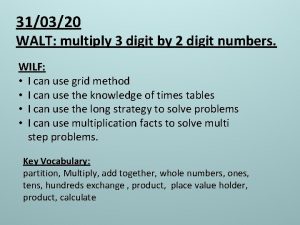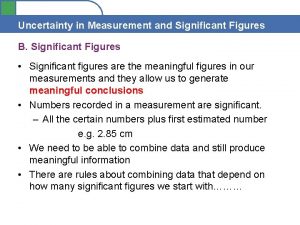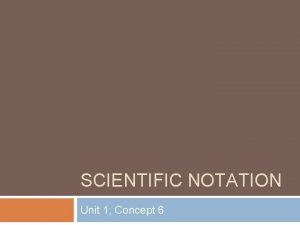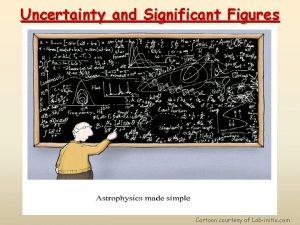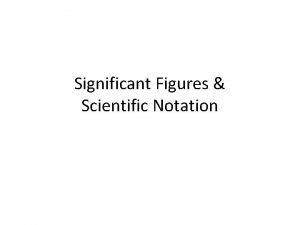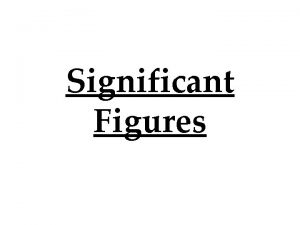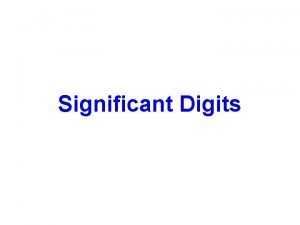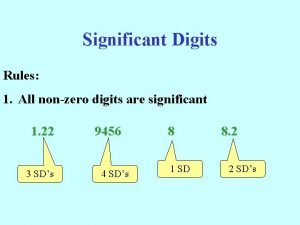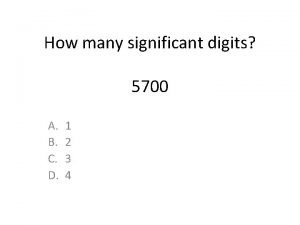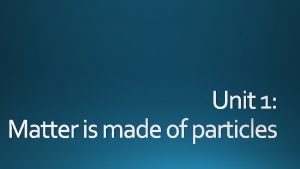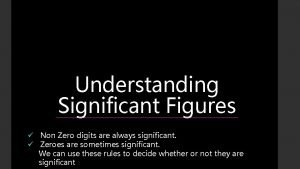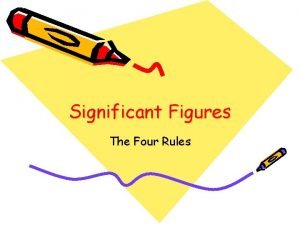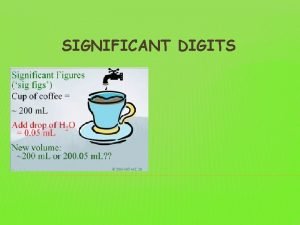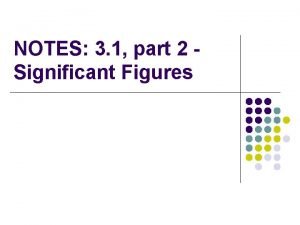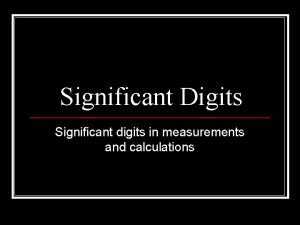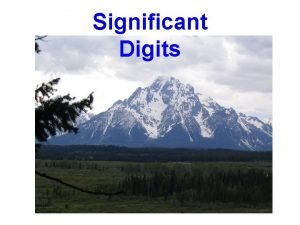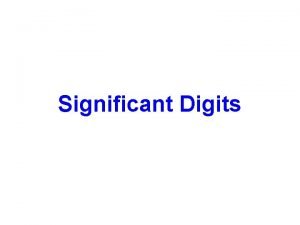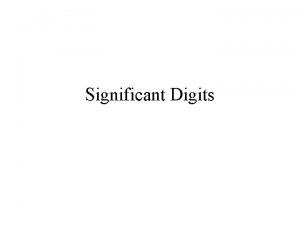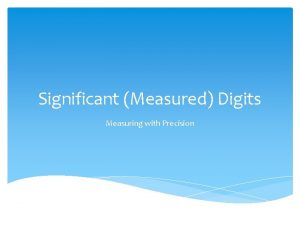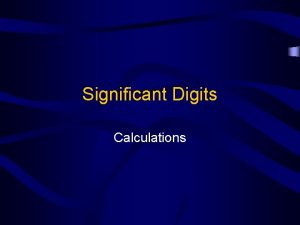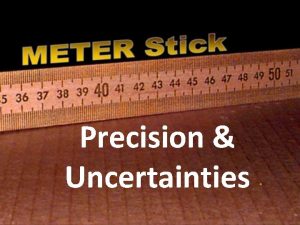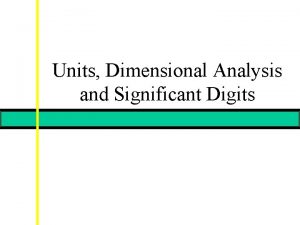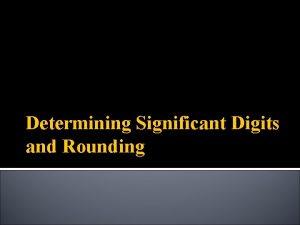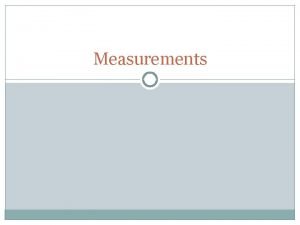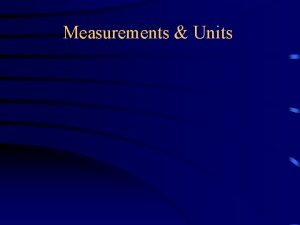SIGNIFICANT DIGITS MEASUREMENTS AND UNITS WHAT ARE SIGNIFICANT

















- Slides: 17

SIGNIFICANT DIGITS, MEASUREMENTS AND UNITS

WHAT ARE SIGNIFICANT DIGITS? ? Number of digits in a figure that express the precision of a measurement. Today we will learn when digits are significant.


EXAMPLES: How many significant digits are in the following numbers? ? 34. 876 0. 009845 7. 01 4. 0

Scientific Notation: Do you know this number, 300, 000 m/sec. ? It's the Speed of light! Do you recognize this number, 0. 000 000 753 kg. ? This is the mass of a dust particle! Scientists have developed a shorter method to express very large numbers. This method is called scientific notation. Scientific Notation is based on powers of the base number 10.

Scientific Notation (continued) The number 123, 000, 000 in scientific notation is written as : 1. 23 x 1011 The first number 1. 23 is called the coefficient. It must be greater than or equal to 1 and less than 10. The second number is called the base. It must always be 10 in scientific notation. The base number 10 is always written in exponent form. In the number 1. 23 x 1011 the number 11 is referred to as the exponent or power of ten.

To write a number in Scientific Notation: Put the decimal after the first digit and drop the zeroes. In the number 123, 000, 000 The coefficient will be 1. 23 To find the exponent count the number of places from the decimal to the end of the number. In 123, 000, 000 there are 11 places. Therefore we write 123, 000, 000 as: 1. 23 x 1011

For tiny numbers: For small numbers we use a similar approach. Numbers smaller than 1 will have a negative exponent. A millionth of a second is: 1. 0 x 10 -6

Sample Questions: a) 5. 3 x 10 -3 0. 0053 b) 6. 34 x 105 634 000 c) 5. 56 x 107 55 600 000

MEASUREMENTS Many quantities can be measured like heat, time, temperature, mass and many more! For our purposes, we will focus on length, mass and time.

LENGTH A distance between two points Can be measured using a ruler Units can be millimeters (mm), centimetres (cm), metres (m), etc. What is the length of this pencil? ?

MASS The amount of matter in an object. Can be measured using a scale Units can be grams (g), kilograms (kg), pounds (lbs), etc.

TIME An interval between two events Can be measured with a stopwatch Units can be seconds, minutes, hours etc.

SIGNIFICANT DIGITS AND MEASUREMENTS


CONVERTING UNITS Sometimes we need to convert units to be able to solve a problem. Units you need to know: 1 km = 1000 m 1 m = 100 cm 1 cm = 10 mm *You should have these memorized* 1 kg = 1000 g 1 min = 60 s 1 hr = 60 min

FOR EXAMPLE: 1100 m = 1. 1 km 78 cm = 780 mm 56. 7 g = 0. 0567 kg 2. 5 min = 150 s
 Mikael ferm
Mikael ferm How to multiply 3 digit numbers by 2 digit numbers
How to multiply 3 digit numbers by 2 digit numbers Significant figures cartoon
Significant figures cartoon Accurate but not precise example
Accurate but not precise example Unit of measurement for power
Unit of measurement for power Significant figures cartoon
Significant figures cartoon Two significant figures
Two significant figures 3 significant figures examples with answers
3 significant figures examples with answers All nonzero digits are significant.
All nonzero digits are significant. 3 significant figures examples with answers
3 significant figures examples with answers 1 non zero digit calculator
1 non zero digit calculator In 5700 significant digit are
In 5700 significant digit are Significant digits
Significant digits Non zero digit are always
Non zero digit are always Sig fig rule
Sig fig rule Significant digits
Significant digits Significant rules
Significant rules Significant figures examples with answers
Significant figures examples with answers

